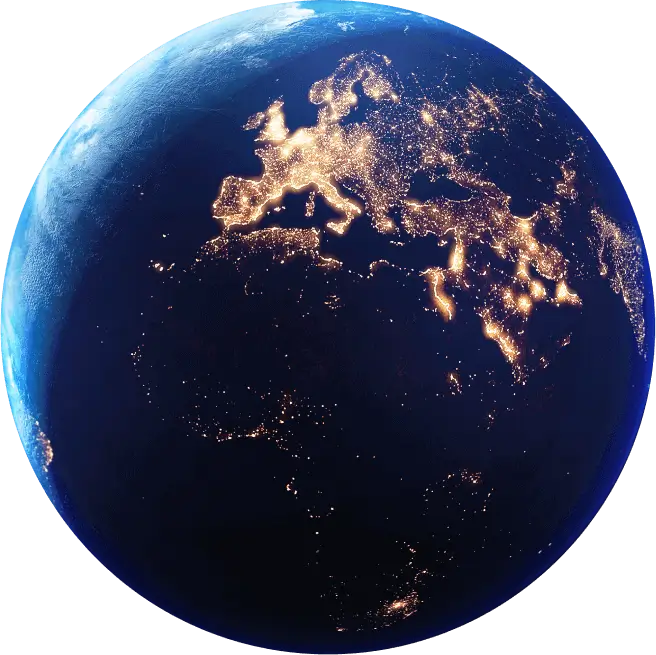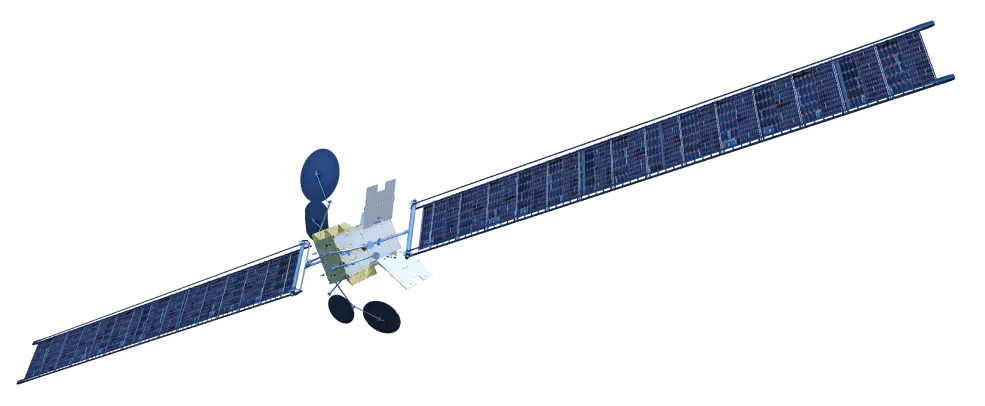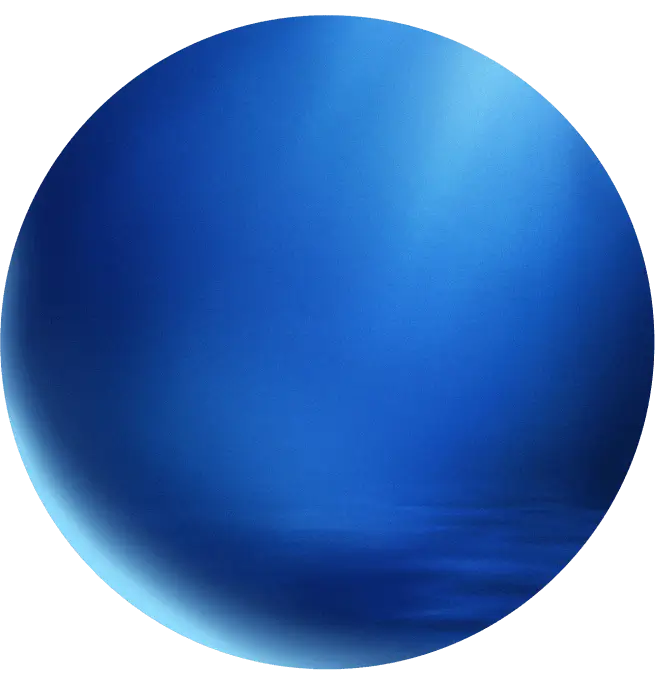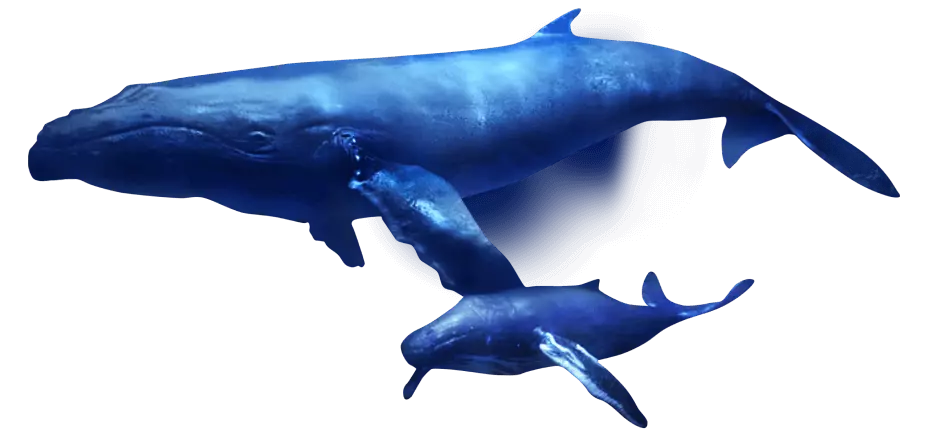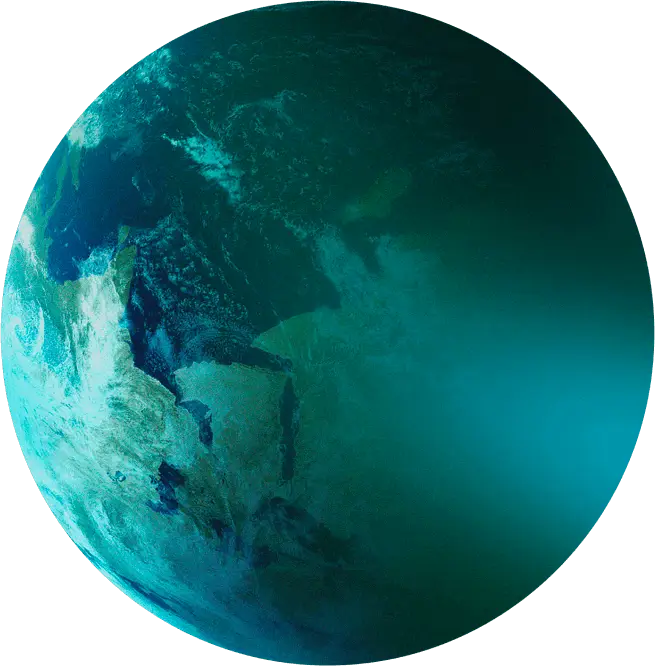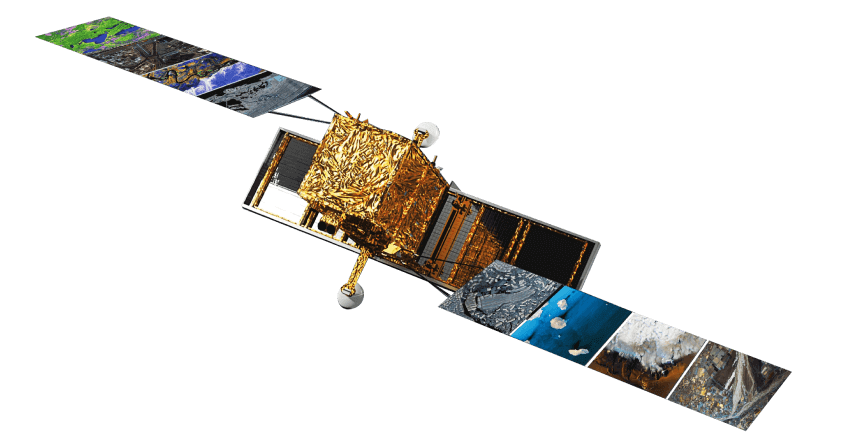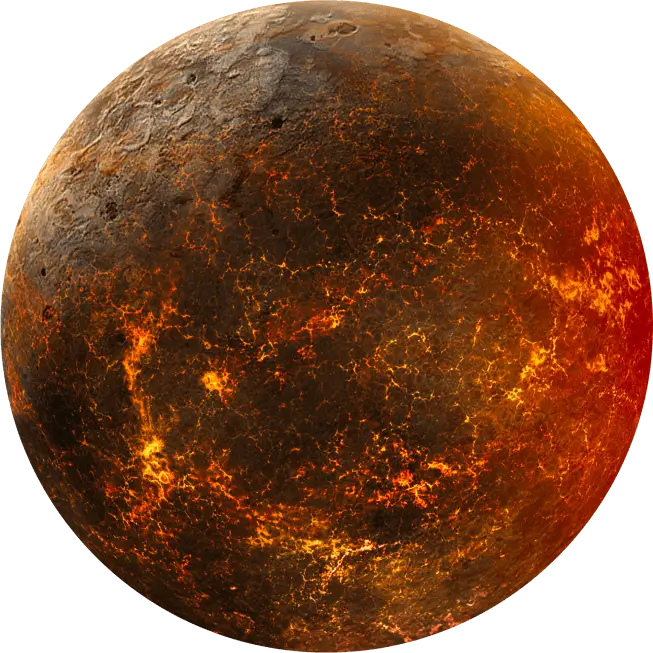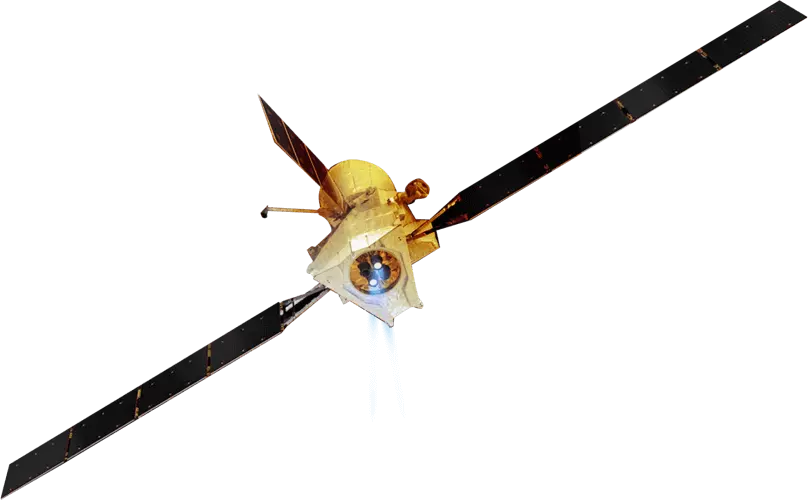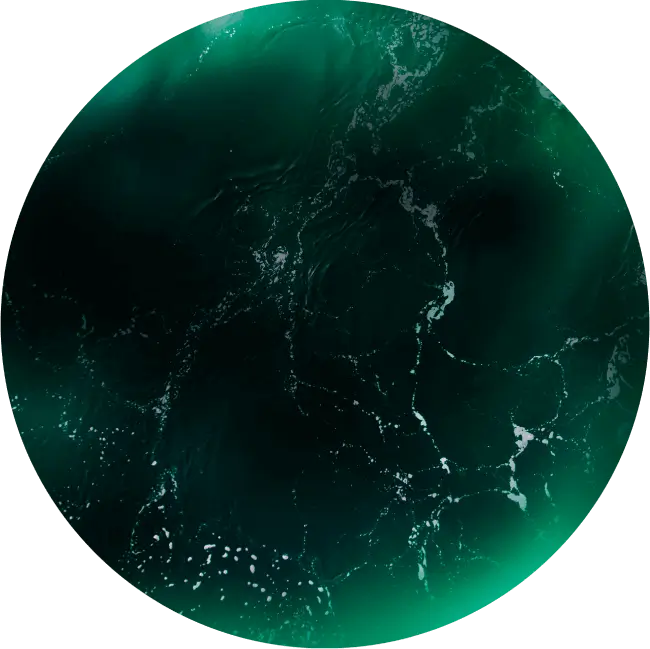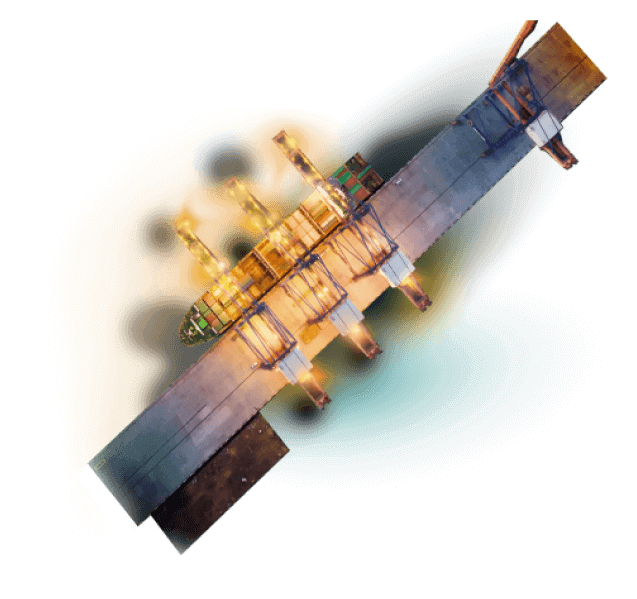Space to Explore
Thales Alenia Space has a long track record aboard some of the most extraordinary international missions exploring the solar system.
From the Sun to Saturn, and from Mercury to Venus, Jupiter and Mars, our solutions have been on every space odyssey seeking to unveil the universe’s most closely guarded secrets, in the process gathering enough data to keep scientists busy for decades. We have also embarked on missions to explore asteroids and comets, one of the most spectacular being Cassini-Huygens, the only European probe ever to land on Saturn’s moon Titan, in 2005. Thales Alenia Space built Huygens and the high-gain antenna, synthetic aperture radar (SAR) and radiofrequency (RF) subsystem for the Cassini orbiter.
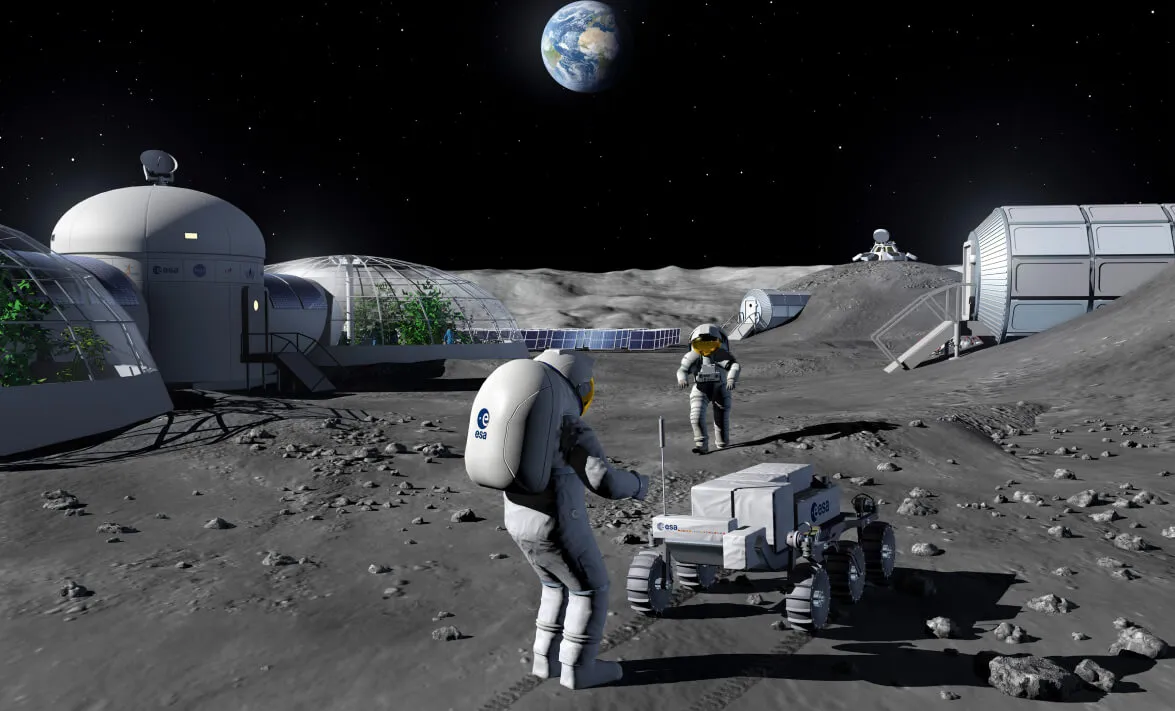
As a matter of fact, the mission was launched in 1997 and the Huygens descent module would only set down on Saturn in 2005 after an interplanetary voyage of more than seven years. We also built the ExoMars mission’s Trace Gas Orbiter (TGO) circling the red planet since 2016, where it is serving as a communications relay between the rovers on the surface and Earth, and helping to analyze gases in Mars’ atmosphere, in particular methane.
The upcoming ExoMars mission, set for launch from the Kennedy Space Center between October and December 2028, will explore the Martian surface in search of signs of past life, a quest that has long fascinated humanity. Led by ESA with a major involvement by NASA, ExoMars 2028 will deliver a European rover capable of autonomous driving on the planet’s surface. Scheduled to reach Mars in 2030 after a long voyage, the rover, fitted with a drill developed by Leonardo, will collect soil samples by drilling into the Martian soil up to 2 meters deep and will analyze their chemical, physical and biological properties using its advanced Analytical Laboratory Drawer developed by Thales Alenia Space. One of the mission objectives is to search for subsurface bacteria, living or fossilized, which would be evidence of extant or previous life on the Red Planet.
As prime contractor for ExoMars 2028 mission, Thales Alenia Space is responsible for designing the Entry, Descent and Landing Module (EDLM), developing its radar altimeter, integrating the Analytical Laboratory Drawer (ALD) on the rover and developing the onboard computer. We are also responsible for assembly, integration and test activities, as well as overseeing the launch campaign.
Early 2025, Thales Alenia Space signed a contract with the European Space Agency to build the EnVision spacecraft that will unveil Venus’ deepest mysteries. The EnVision mission will provide a holistic view of the planet, from its inner core to the upper atmosphere, in order to determine how and why Venus and Earth evolved so differently.
Now, with NASA’s future Artemis mission, all eyes are on the Moon—but more of that later.

We have led stellar science missions like Herschel and Planck, two space observatories designed to study the formation of galaxies and the origin of the Big Bang. There’s also the ALMA giant radiotelescope in Chile’s Atacama Desert, for which we supplied 25 of the 64 parabolic antennas.
The “star” of the moment is Euclid, an ESA science mission for which Thales Alenia Space is the prime contractor. Successfully launched in July 2023, it aims to study dark energy and dark matter to delve deeper into what is driving the accelerating expansion of the universe.
A pivotal player on the International Space Station

From the outset, we have been a top-tier player on the ISS, supplying most of its pressurized habitable volume. We built Nodes 2 and 3, the Leonardo Permanent Multipurpose Module (PMM), the Multipurpose Logistics Modules (MPLM), the structure of the Columbus laboratory and the Cupola, famous the world over as the viewing gallery where astronauts have taken such spectacular pictures of our planet from the station’s 400-kilometer orbital perch. This high-tech marvel built in Turin, with its seven windows, is our astronaut friends’ favorite observation post on the ISS. We have also acquired significant expertise in pressurized cargo modules for the ATV and Cygnus resupply vehicles. Cygnus makes two trips to the station a year, ferrying food, water, spares and science experiments to the ISS crew. This unique expertise in Europe led the U.S. firm NanoRacks to select Thales Alenia Space to build the pressurized structure of its commercial module berthed to one of the ports of the station’s Tranquility module (Node 3).
Sending astronauts back to the Moon
The last crewed mission to Earth’s natural satellite reaches back to Apollo 17 in 1972. We have waited more than 50 years for the Moon to become a priority for space exploration once again. Why such a return to favor? In 2008, we discovered water on the Moon. There is also clear evidence of oxygen and hydrogen in lunar ice, which could be used for example to produce rocket fuel. The Moon’s subsurface also contains energy resources like helium 3.

For NASA’s Artemis program, designed to send astronauts back to the Moon in the near future, an entire ecosystem will be required, comprising a Moon Village, a lunar economy and a cislunar crewed space station in elliptical orbit around the Moon. Communications and navigation systems will also be needed. Thales Alenia Space won a major contract with the Italian space agency (ASI) for the Multi-Purpose Habitat (MPH), the first permanent lunar base of its kind. This award strengthens Thales Alenia Space’s leadership position in the design of habitat modules for crewed space exploration.
A world leader in orbital infrastructures, Thales Alenia Space is a top-tier industry partner on the Lunar Gateway, a 40-metric-ton space station for which we are supplying the Lunar View, Lunar Link and Lunar I-HAB pressurized modules to ESA, and the HALO module to Northrop Grumman. The company is also partnering with the Mohammed Bin Rashid Space Center to design and develop the Emirates Airlock module. This module will serve as a decompression chamber for deploying scientific equipment and preparing astronauts for extravehicular activities. We have also been chosen to build three pressurized modules for Axiom Space’s commercial space station, for which Philippe Starck has designed the interiors.

Flying astronauts to the Moon is one challenge, but we also need to ferry materials and science equipment to the lunar surface. Thales Alenia Space won a major contract with ESA to develop the Argonaut lunar descent module, which will deliver cargo to the surface. This versatile, autonomous lunar lander is designed to carry cargo, vehicles and other payloads, as well as science missions. Argonaut’s first flight, planned for 2030, will deliver navigation and telecommunication payloads, an energy production and storage system and equipment to enable European companies to explore the lunar south pole region.

The Moon is set to serve as a staging post and stepping stone for crewed deep-space missions, with Mars the next step on our journey. NASA has developed the Orion capsule with precisely these kinds of missions in mind. Thales Alenia Space is supplying the thermomechanical systems for the European service module. Working with Avio, we will also be building ESA’s Space Rider reusable autonomous space transportation system, which draws on the heritage of the IXV demonstrator. We are also prime contractor and co-financer of the LEO Cargo Return Service program, a reusable cargo vehicle in low orbit which will transport crews aboard manned space stations in low orbit and create a cargo transport service to and from the cislunar space station Gateway.
Spearheading on-orbit servicing
Thales Alenia Space is developing a new solution set to attract a lot of attention in the years ahead. On-orbit servicing spacecraft are truly “Swiss Army knives” capable of performing robotic tasks and rendezvousing in space.
These will include repairs, maintenance, refueling, inspection and deorbiting of space debris. The goal is to extend satellites’ operational lifetime and thus limit the propagation of space debris—a disruptive approach to foster sustainable and eco-friendly space operations.

